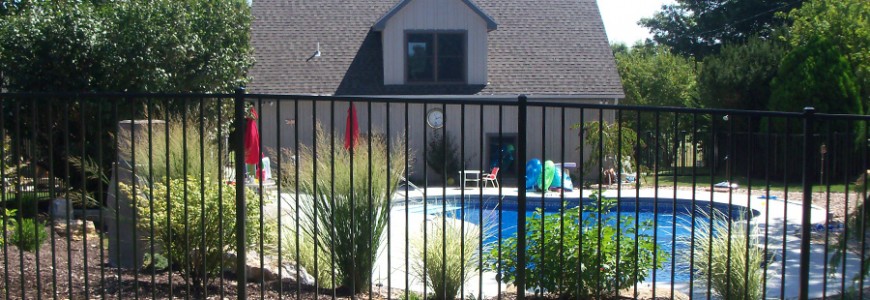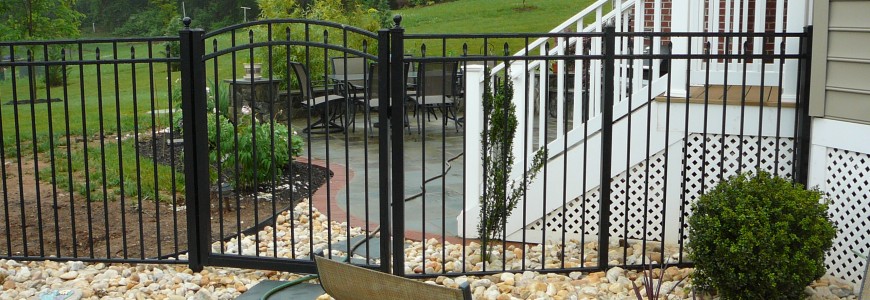Let’s face it, having a swimming pool in your backyard makes life a lot more fun. After a hard day of work, there’s nothing more refreshing than coming home and taking a quick splash in the pool to start off your evening. If you have kids, it’s a way for them to get some exercise while they’re on summer vacation; it’s also a great way for adults to exercise as well. Owning a pool affords you a great way to connect with neighbors and friends as almost everyone enjoys a good cookout that turns into a pool party.
However, swimming pools can also put your family at risk when you don’t take the proper precautions. According to the U.S. Consumer Product Safety Commission(CPSC), each year thousands of American families deal with pool tragedies—drownings and near-drownings of young children. The CPSC estimates that each year there are 300 children under five years old who drown in swimming pools and that emergency rooms administer treatment for more than 2,000 children a year under the age of five who were submerged in residential pools.
Before you build a pool or if you happen to own one, make sure you know everything about your liabilities for pool ownership. A great place to start is the CSPC website, which offers a great booklet you can download that explains the importance of creating barriers near any entry to the pool – even from within the house. It also offers tips on how to prevent a child from getting through a pool barrier that every parent needs to know. If you own pets, this information is just as valuable as some small animals can also drown if they accidentally fall into a pool.
Pool Fence Regulations To Follow
Every state and local government has its own set of guidelines that all consumers and businesses must follow if a pool exists on the property. Check with your local authorities to see what is required in your area’s building code or in other regulations. Below are some of the most important pool regulations you need to follow as a necessary precaution for protecting your children, pets, and your property. Here is what the CSPC recommends:
- The top of your pool fence should be at least 48 inches above the surface measured on the side of the barrier, which faces away from the swimming pool. Some states and counties mandate a pool fence be a minimum of 60 inches tall.
- The maximum vertical clearance between the surface and the bottom of the pool fence should be 4 inches measured on the side of the fence which faces away from the swimming pool. In the case of a non-solid surface, grass or pebbles, the distance should be reduced to 2 inches, and 1 inch for removable mesh fences.
- Where the top of the pool structure is above grade or surface, such as an above ground pool, the fence may be at ground level, such as the pool structure, or mounted on top of the pool structure.
- Openings in your pool fence should not allow passage of a 4-inch diameter sphere.
- When your fence is composed of horizontal and vertical rails and the distance between the bottom and top horizontal rails is less than 45 inches, the horizontal rails should be located on the swimming pool side of the fence.
- Spacing between vertical rails should not exceed 1¾ inches in width. Where there are decorative cutouts, spacing within the cutouts should not exceed 1¾ inches in width.
- Maximum mesh size for chain link fences should not exceed 1¼ inch square unless the fence is provided with slats fastened at the top or the bottom, which reduce the openings to no more than 1¾ inches.
- When you have a fence composed of diagonal rails (such as a lattice fence), the maximum opening formed by the diagonal members should be no more than 1¾ inches.
- Pool fence gates should be equipped with a locking device. Your pedestrian access gates should open outward, away from the pool, and should be self-closing and have a self-latching device.
- Pool fence gates other than pedestrian access gates should have a self-latching device. When you have a latching device located less than 54 inches from the bottom of the gate, the release mechanism should be located on the pool side of the gate at least 3 inches below the top of the gate and the gate and fence should have no opening greater than ½ inch within 18 inches of the release mechanism.
- If your home serves as part of the barrier, you also need to make sure all doors with direct access to the pool are equipped with an alarm that produces an audible warning when the door and its screen, if present, are opened.
Ready for Your Own Pool Fence?
Ready to get started on a pool fence for your property so you can be compliant with local pool codes? Call us today 1-855-469-5421


